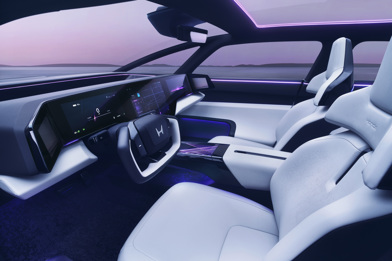TRAVEL DOWN MEMORY LANE WITH THESE RETRO FAVOURITES
Evolution has its downside. As cars have become safer and more sophisticated, there are a lot of features that were once familiar but have become obsolete.
We miss quite a few of them. Here’s our top 10.
Pop-up headlights

Was there anything cooler than pop-up headlights in the 1980s?
Having pop-ups meant you drove a real sports car, with a low nose and sleek profile that was too exquisite to spoil with conventional fixed lamps. From the driver’s seat, there was a real sense of occasion when dusk beckoned and you activated the light mechanism with a whirr and a clunk. Or just a whirr if one was broken, which it often was.
You could argue that crash regulations killed the pop-up light. But modern headlight technology also no longer requires the enormous lamp area that it once did.
Column gearchanges
These days, carmakers go to extreme design lengths to liberate legroom and storage space around the dashboard and console.
But back when men were men, and those same men said things like ‘‘three on the tree’’, the industry had that issue licked with column gearchange levers. With the shift sprouting from the column — usually wire-thin and incorporating several right angles — there was plenty of space down below and ergonomic excellence into the bargain. What better place for the gearshift than right next to your hand on the wheel?
Never mind the crunchily imprecise action and unreliably complex linkages, this was one cool way to drive a car. Note Mercedes-Benz’s homage, with its modern column-mounted electronic shift wand. Bit too small, but nice try.
Bench seats

What do you do with all that space when you have a column change? Have a bench front seat, of course. A bench gives you passenger space aplenty, which you have to fill because otherwise you’ll slide all over the place during brisk cornering.
Three-abreast, four — how many more? The sky was the limit really, at least back in the day when three-point seatbelts were for sissies.
Bench front seats were a firm favourite of American and Australian carmakers. Ford and Holden offered them right up until the 21st century.
Quarterlight windows

Quarterlight windows let in a little fresh air.
Remember when cars had opening quarterlight windows? That little triangle of glass beside the A-pillar that could be opened separately for extra ventilation, usually operated by an exquisitely tiny chrome lever.With modern ventilation and air-conditioning systems, there’s really no need for quarterlight windows. But wouldn’t it be nice to let a little fresh air into the car at speed without creating a tornado and ear-bleeding buffeting in the cabin?
Cigarette lighters and ashtrays

Smoking in cars is not cool. But who can forget the childhood fascination of clicking the cigarette lighter all the way in and pulling it out moments later to enjoy that glowing red goodness? Hopefully without burning a hole in the upholstery. Along with lighters came ashtrays. Cigarette ash in the car is disgusting, but these chromey curved trays could be used as brilliant coin holders.
Wind-up windows
Back in the time when 90 per cent of the population didn’t suffer from atrophy of the arms, cars had manual wind-up windows.
Aside from being a quick, convenient and extremely durable method of lowering the glass, it was also another excuse for gorgeous design detail.
Pushbutton radios
If you want to change the radio frequency on a modern car, you usually have to do it by pressing, pinching and swiping a touch-screen, waiting patiently while the operating system seeks and stores every station in the country.

Back in the day, cars had manual-dial radios. You turned a knob to tune the station, using your ears to adjust it to exactly the right frequency.
When you wanted to store a station, you could do so using a mechanical pushbutton that was roughly the size of a cowboy’s belt buckle. Brilliantly simple.
Full-sized spare tyres
Once upon a time, cars had a full-sized spare in the boot so that if you got a flat tyre, you could change it and carry on.
These days, with the desire to minimise weight, improve interior packaging and be clever, the spare has been tossed out in many cars in favour of space-saving alternatives (which are still wheels but too small to go much above 80km/h), cans of goo or even run-flat rubber.
Rear louvres
All the rage in America and Australasia in the 1970s, rear-window louvres were another accessory that was indicative of instant cool. Quite literally. Louvres were originally designed for sports and performance coupes to keep the sun out while maintaining reasonable rearward vision. They soon became obligatory on such vehicles as the family Cortina and why not? Louvres, pinstripes and some sheepskin seat covers and you were sweet.
Louvres are actually making a comeback, serving as the engine cover on the Lamborghini Huracan. Excellent.
Turn indicators
For decades, production cars were fitted with amber lights at each corner. Sometimes called “indicators”, these were activated by the driver to inform other road users about changes of direction. Sadly, modern driving culture has rendered the use of these orange lights obsolete, although many new cars still carry them as a styling detail and homage to the courteous past.



